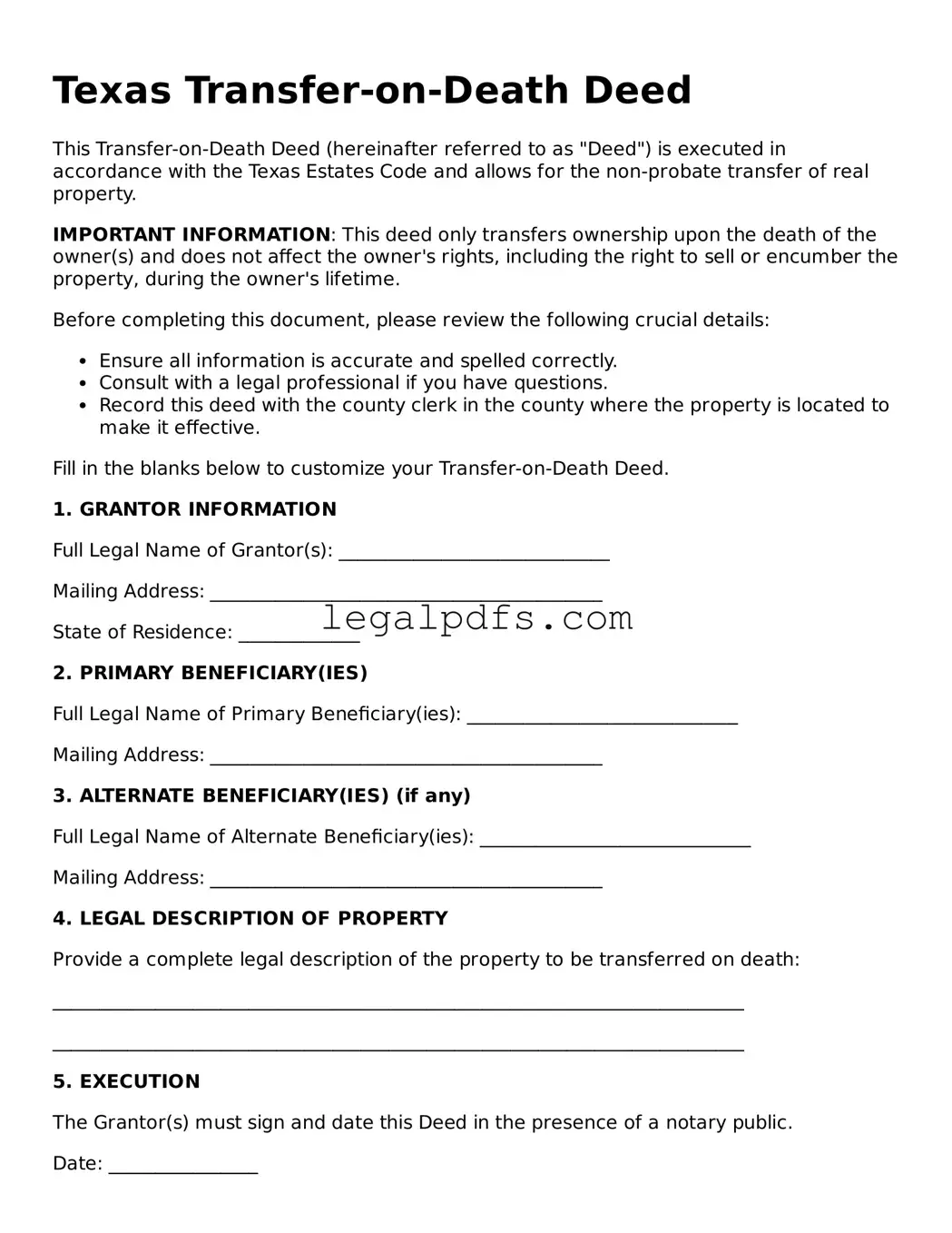Texas Transfer-on-Death Deed
This Transfer-on-Death Deed (hereinafter referred to as "Deed") is executed in accordance with the Texas Estates Code and allows for the non-probate transfer of real property.
IMPORTANT INFORMATION: This deed only transfers ownership upon the death of the owner(s) and does not affect the owner's rights, including the right to sell or encumber the property, during the owner's lifetime.
Before completing this document, please review the following crucial details:
- Ensure all information is accurate and spelled correctly.
- Consult with a legal professional if you have questions.
- Record this deed with the county clerk in the county where the property is located to make it effective.
Fill in the blanks below to customize your Transfer-on-Death Deed.
1. GRANTOR INFORMATION
Full Legal Name of Grantor(s): _____________________________
Mailing Address: __________________________________________
State of Residence: _____________
2. PRIMARY BENEFICIARY(IES)
Full Legal Name of Primary Beneficiary(ies): _____________________________
Mailing Address: __________________________________________
3. ALTERNATE BENEFICIARY(IES) (if any)
Full Legal Name of Alternate Beneficiary(ies): _____________________________
Mailing Address: __________________________________________
4. LEGAL DESCRIPTION OF PROPERTY
Provide a complete legal description of the property to be transferred on death:
__________________________________________________________________________
__________________________________________________________________________
5. EXECUTION
The Grantor(s) must sign and date this Deed in the presence of a notary public.
Date: ________________
Grantor's Signature: _______________________________
Grantor's Printed Name: ____________________________
State of ____________
County of ___________
This document was acknowledged before me on (date) ____________ by (name of Grantor) ________________________.
Notary Public's Signature: ___________________________
Notary Public's Printed Name: ________________________
My commission expires: _______________
Please note: After completing this document, ensure it is recorded with the appropriate county clerk's office to be effective.
